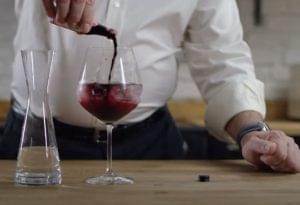Industrial alcohol production is built on a broad raw material base – this is how use and consumption are changing in Hungary
The production of industrial ethyl alcohol now relies on an extremely diverse range of agricultural raw materials, as revealed by a detailed overview of Agrárszektor. Domestic and international producers use both sugar-containing, starch-containing and cellulose-based plant raw materials, depending on the purpose for which the alcohol is intended.
Three groups of raw materials dominate
 Sugar-containing plants (e.g. sugar beet, sugar cane juice, sweet fruits, molasses) can be fermented directly.
Sugar-containing plants (e.g. sugar beet, sugar cane juice, sweet fruits, molasses) can be fermented directly.
Starch-containing raw materials – corn, wheat, barley, potatoes, cassava – require enzymatic saccharification.
Cellulosic by-products (corn stalk, wheat straw, sugarcane fiber) are the most sustainable option, as they do not compete with food raw materials.
In recent years, manufacturers have increasingly focused their development on alcohol production from cellulose, which is of strategic importance due to the industry’s decarbonization goals.
The use of industrial alcohol is becoming increasingly widespread
Ethyl alcohol is not only a raw material for spirits, but also a key ingredient in:
-
in the chemical industry (as a solvent for paints, varnishes, adhesives),
-
in the cosmetic and pharmaceutical industries (perfumes, tinctures, ointments),
-
disinfectants in the production of,
-
in the production of bioethanol fuel,
-
in cleanroom applications (cleaning of optical and glass surfaces),
-
in the chemical industry in syntheses (acetic acid, acetaldehyde, esters).
Industrial ethanol is mostly denatured to make it unsuitable for human consumption.
Hungarian consumption trends: long-term decline, restructuring market
According to the latest WHO data, the average annual consumption in Hungary among people over 15 years of age is 10.4 liters of pure alcohol/person, which shows a slightly decreasing trend. However, the segments perform differently:
-
beer: total volume decreases, but premium and non-alcoholic categories increase,
-
wine: stable, still dominant in the older age group,
-
strong drinks: outlook is more uncertain, measurement of home brewing is limited,
-
young people: popularity of low-alcohol alternatives and cocktails is growing.
Problematic consumption remains a significant factor
In international comparison, Hungary is not among the countries with the highest consumption, but the rate of alcohol-related health harms is high. According to expert estimates, 10–20% of the adult population is affected by some degree of problem drinking.
Related news
Pernod Ricard’s quarterly revenue drops
🎧 Hallgasd a cikket: Lejátszás Szünet Folytatás Leállítás Nyelv: Auto…
Read more >E-cigarettes, coffee, energy drinks – what do our teeth “say”?
🎧 Hallgasd a cikket: Lejátszás Szünet Folytatás Leállítás Nyelv: Auto…
Read more >Better in moderation – conscious alcohol consumption is especially important in the summer
🎧 Hallgasd a cikket: Lejátszás Szünet Folytatás Leállítás Nyelv: Auto…
Read more >Related news
THE LATEST ISSUE OF TRADE MAGAZINE HAS BEEN PUBLISHED!
🎧 Hallgasd a cikket: Lejátszás Szünet Folytatás Leállítás Nyelv: Auto…
Read more >Even though half of Hungarians are stressed about Christmas gifts, we don’t compromise on quality
🎧 Hallgasd a cikket: Lejátszás Szünet Folytatás Leállítás Nyelv: Auto…
Read more >In addition to the wallet, values also matter – this is how Hungarians’ shopping is changing
🎧 Hallgasd a cikket: Lejátszás Szünet Folytatás Leállítás Nyelv: Auto…
Read more >







